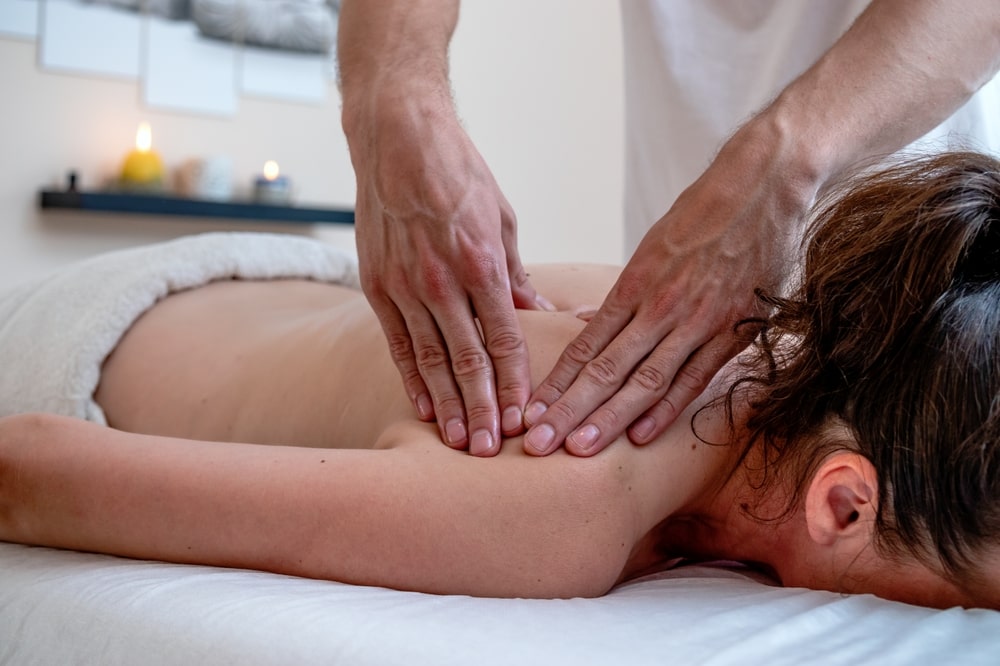
When you’re getting a massage, you probably don’t pay too much attention to how your massage therapist is applying pressure to your body. What you may not have realized is your massage therapist isn’t just doing things at random.
Massage therapists are trained in various massage styles, strokes, and techniques to address the needs of their clients. They often spend many years learning to perfect their techniques, and many never stop learning.
Massage techniques serve as the building blocks of any good massage. For example, knowing how to perform the effleurage massage technique is important when performing a Swedish massage.
If you’re curious to learn about massage therapy techniques, look no further. Here are six of the most common massage therapy techniques.
Compression
Compression is used to target large areas of muscles. Pressure is applied to muscles, held, and then released. This technique is then repeated in different areas of the body. The amount of pressure applied will vary.
Compression can relieve tightness in muscles, aid in injury recovery, and help with relaxation. Since compressions will initially restrict blood flow, it will encourage a large amount of blood to gather in that area until it’s released. This process can help improve blood circulation.
Effleurage
Effleurage is a French word meaning “to touch lightly on.” It is a massage technique often used at the beginning of a massage treatment. Effleurage involves applying a gentle amount of pressure with hands laid flat, side by side, gliding over the body. Knuckles or forearms could also be used when applying this massage technique.
The effleurage technique is used to ease muscles and help relax clients. It can help encourage blood circulation and ready the client for more intense massage strokes.
Petrissage
Petrissage means “to knead” in French and refers to a baking technique. Essentially, the petrissage massage technique is similar to kneading dough. Petrissage is where muscles and soft tissues can be stretched, squeezed, and kneaded to relieve and loosen them.
Petrissage tends to be an umbrella term, and several different techniques fall within it.
Kneading
Kneading is the most common form of petrissage people are probably familiar with. Kneading is where the skin and underlying tissue are lifted and rolled away from the bone. Skin and tissue are then squeezed back toward the bone. After being squeezed, the skin and tissue are compressed.
Lifting
Lifting is when the skin and tissue are lifted, squeezed, and then released. Compared to kneading, lifting requires a massage therapist to use their thumb and first two fingers.
Skin and Muscle Rolling
Skin rolling is where the skin is lifted and rolled between the fingers. Muscle rolling is where muscle fibers are lifted and compressed laterally.
Wringing
Wringing involves compressing tissue against each other or underlying bones and then gently lifting away. When performed, a massage therapist will pull the tissue with the fingers of one hand and push the tissue back with the thumb of the other hand toward the underlying structure.
Tapotement
Tapotement comes from the French word “to tap or drum,” which is a pretty accurate descriptor. Tapotement is where fast rhythmic touches are applied to the massage client.
Tapotement is one of the most stimulating massage techniques and can wake the body up. Tapotement can be applied using a variety of motions. Some of the most common ways are using fingers, the edge of the hand, or cupped hands.
Vibration
Vibration is where muscles are shaken in an up and down movement. It’s an advantageous massage technique for athletes who are about to engage in a sporting activity or event.
Massage therapists will use their hands, palms, or fingertips to stimulate or soothe muscles. Strong vibrations can improve blood circulation and alleviate tight muscles, while light vibrations can help muscles relax.
Friction
Frictions involve applying pressure to small problematic areas. Massage therapists will gently use their thumbs or fingers to apply deep pressure in a back and forth or circular motion to underlying muscles. Massage clients may feel some discomfort when friction is applied, but it shouldn’t be painful.
The friction massage technique is typically used after the body has been warmed up from other massage techniques. Friction helps break scar tissue, adhesions, and realign tissue fibers. It can also be helpful in rehabilitating an injury.
Understanding Massage Techniques
Learning different massage techniques isn’t something your average person will probably do. However, you should be somewhat familiar with them. It helps to know what your massage therapist is doing to your body.
Learning about massage techniques can help you understand everything that occurred during your massage. The more you know about massage techniques, the better you can appreciate your massage therapist’s work.
For your next massage, consider visiting Happy Head. You can book a massage online now for one of our San Diego locations.